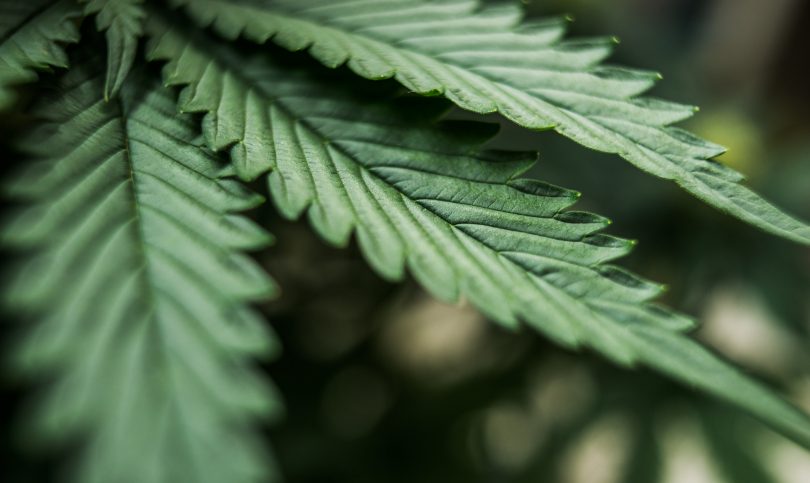News the ‘Don’ in the White House has secured a deal for China to buy U.S. hemp has been given an industry thumbs-up.
But, the question now being asked is whether there will be enough supply to fulfill any oriental exports. The passing of the Farm Bill in 2018 saw a massive increase in hemp farming with total acreage under cultivation rising five-fold. Licences issued for hemp cultivation increased to more than 400,000 acres in 2019, from 80,000 acres in 2018.
“As Bad As It Can Get”
However, recent estimates suggest just over the half of the licensed areas were planted, and figures from advocate group says Vote Hemp seem to back this up.
It estimates 2019’s U.S. hemp harvest will come in between 115,000 to 138,000 acres – well up on the to 78,126 acres of hemp harvested in 2018. And, whilst still a U.S. record, an increase of 50% it is hardly of the same magnitude as the licensing round indicated.
It’s been a tough year for this industry, with a combination of depressed prices, bad weather, seed issues, a lack of processing facilities and punitive rules on THC-content combining to depress even the most optimistic spirits.
One Illinois official told the wvik.org that ‘2019 was as bad as it can get’.
Use the sign-up form below or click here to subscribe to the CBD Business Weekly Newsletter.
Seed Sex Issues
With most farmers looking to grow hemp to supply the booming CBD market there was a move away from the seeds familiar to the industrial hemp industry. Some farmers claim these new seeds just simply failed, while others have seen them produce ‘hot’ crops.
The Department of Agriculture (USDA) Interim Final Rules, published in October, last year, state that crops with a THC (delta-9 tetrahydrocannabinol) level of 0.3% are illegal and must be destroyed.
Over in Europe the THC content is restricted to 0.2% and this means most hemp plants are monocieous – both sexes on the same plant – producing CBD levels of around 3%. Seeds with a 0.3% THC bring opportunities to breed dioecious, or female plants, with much higher levels of CBD – up to 15%.
However, U.S. industry ‘Bible’ Hemp Benchmarks carries reports from dozens of farmers who are in dispute with seed companies over poor genetics; ‘for providing non-feminized seed sold as feminized, as well as for seeds with low germination rates’, it says.
Hot Crop
One large Kentucky business is suing an Oregon seed company for $44 million after purchasing millions of ‘feminised’ seeds – to discover ‘70% were male’. The Kentucky crop was destroyed to avoid pollinating other area hemp crops, resulting in losses for farmers and processors, say reports.
These difficulties are compounded by the USDA’s Interim Final Rules released on October 31 which takes a harsh approach to THC levels. This is a major irritant for U.S. farmers as they include in their calculations not just THC, but THC’s non psychoactive cannabinoid cousin THC-A (the acidic form of THC).
New USDA Rules Spell Problems For Smokable Hemp Flower Industry
With this included in total THC levels – on a dry weight basis – this can boost total THC content to well over 0.3%. Recent reports from Arizona have demonstrated the extent of this problem with nearly 40% of its farmers’ plants failing the THC test.
The Arizona Department of Agriculture’s Plant Services Division, say that since early December, 53 of the 130 hemp crops tested failed, on a total of nearly 700 acres, equating to $13 million in losses.
“The failure rate is not unexpected based on anecdotal information from around the country regarding variable seed quality and genetic expression, for THC content, between the varieties planted,” said John Caravetta, associate director of the Plant Services Division.
Buyers’ Retreat
Arizona, Colorado, Oregon, Montana, Tennessee and Kentucky are amongst the largest hemp growing states in the U.S. The Hemp Benchmark Alliance monthly reports on the state of the growing industry makes for interesting reading.
In the last report of 2019 its summary of the year discusses the oversupply of CBD biomass, depressed prices and the concerns of anxious farmers looking for buyers.
It highlights the frustration of one Oregon cultivator who says that along with depressed hemp prices one of the biggest concerns is the growing number of slated buyers backing out of contracts. “These buyers are hedging on the fact that these farmers aren’t set up properly.”
Another said: “People want to make deals but the buyers are coming in far too low.” This report bleakly continued: “With many farmers experiencing difficulties and taking losses growing hemp this year, along with the perception that the USDA’s regulations will make it more difficult to bring in a compliant harvest, how much acreage will be planted in the coming year is also an open question.”

New Trade Group
Associated Press reports the USDA estimating that 20% of the country’s hemp crop will fail under the proposed regulations. The problems facing the industry may explain why the USDA extended the comment period on its Interim Final Rules for the industry for 30 days, until January 29.
One agricultural commentator told the Associated Press: “There are 46 states where hemp is legal, and I’m going to say that every single state has raised concerns to us about something within the rule.”
In an effort to help the industry speak as one voice more than 300 farmers, the U.S. Hemp Farming Alliance, First Crop, HiLo Seed, GeoCanna and Farm Journal have come together to form the U.S. Hemp Growers Association
Former Hershey, USDA and Organic Trade Association official Cara Wilcox will be its first executive director. One of its first issues will be to deal with are the hemp testing rules which mandate that a crop must be harvested within 15 days of its THC test, which, itself, must be conducted at a lab certified by the U.S. Drug Enforcement Administration.
THC-Free Hemp Seed
Farmers are lobbying for a 1% THC limit and a 30-day harvest window to give them more flexibility, along with calls for improved crop insurance cover. There is also the issue of seed genetics and the need to overcome hot crops.
On the latter point a Spanish hemp seed known by Panakeia is one of the first THC-free ones of its kind to come to market. Developed by Hemp Trading and the Universidad Politècnica de Valencia reports are emerging of U.S. suppliers sourcing seeds for future growing seasons.
Such a move may eventually see the U.S. overcome its existing hemp hurdles and allow it to become an exporting powerhouse – to China – and elsewhere.
For more articles like this one, subscribe to the CBD Business Weekly Newsletter.









